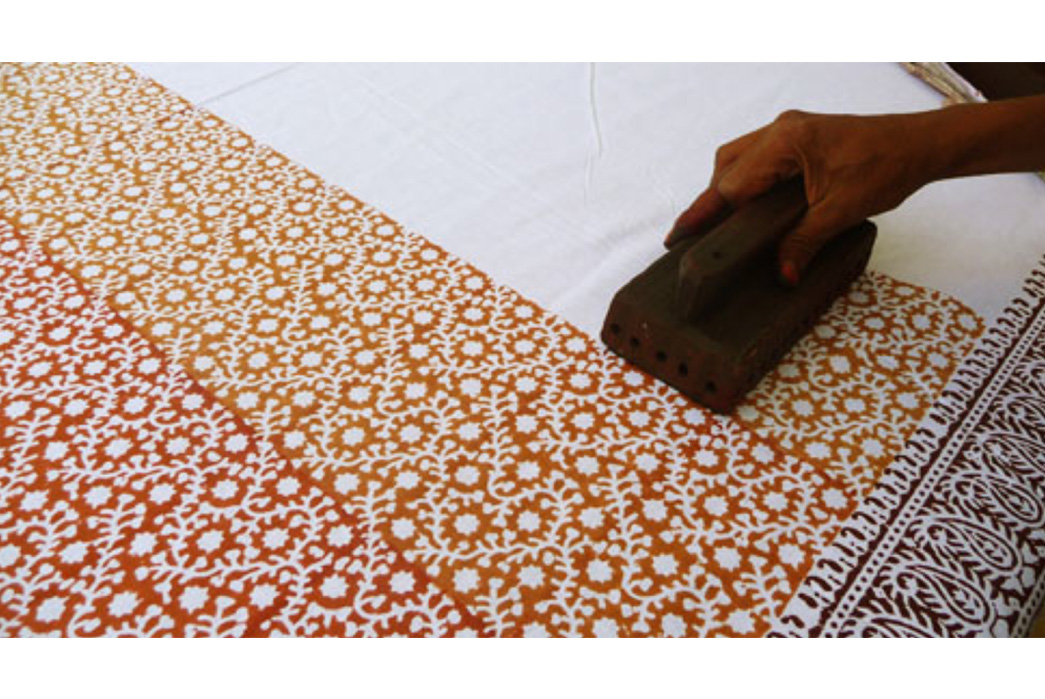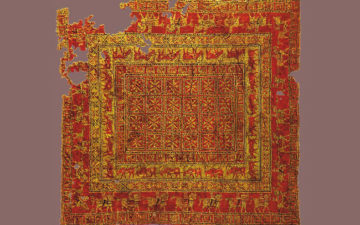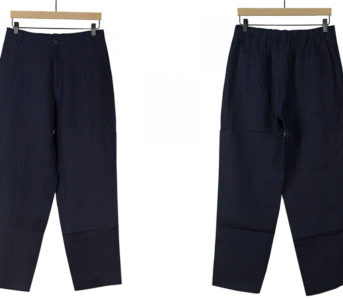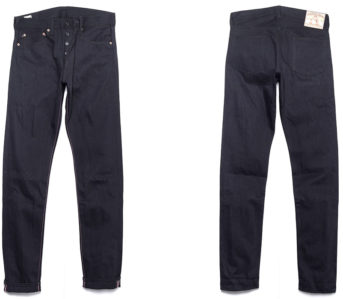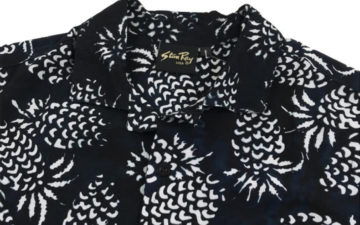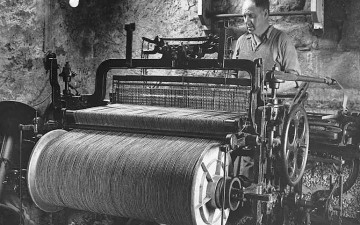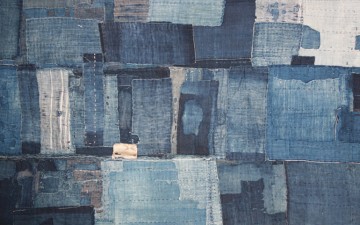At Heddels we’re all about weaves. We love our Jacquard and our sashiko, but we don’t often talk about the printed patterns on our clothes. There are several important fabric-printing techniques and for some reason, we’ve never fully discussed them before, so we’re amending that RIGHT NOW.
The way people have printed on fabric over the years is wide and varied, but we’re breaking down the four most common techniques you’re liable to encounter.
Woodblock and Resist
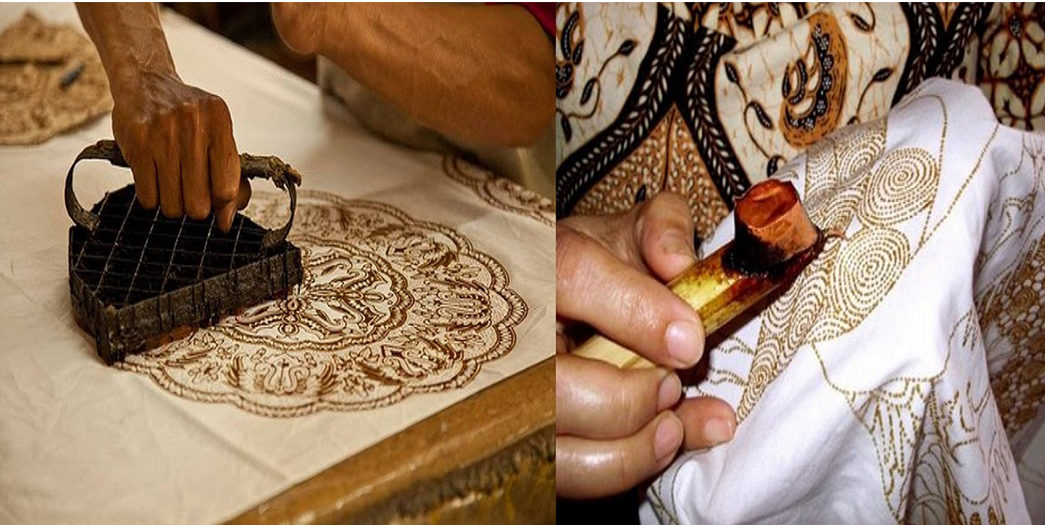
Batik, an Indonesian wax-resist dye technique. Image via Real Margaria Batik.
Woodblock printing and resist-dyeing are perhaps the oldest and most labor-intensive ways to put a design on fabric and interestingly enough, they make two halves of a whole. While wood blocking administers a design directly to a fabric, with (you guessed it) a block of wood; resist-dyeing involves the application of wax, mud, or some other substance, which becomes a pattern after the fabric is dipped in dye and the resist material is washed away.
Woodblock printing has functions far beyond sprucing up textiles. Since antiquity, this technique has been used for all manner of artwork and writing. The earliest examples of woodblock printing are seen on silks from the Han dynasty in China, which dates them back to before 220 C.E. It would be hundreds of years before Europeans figured out this same technology.
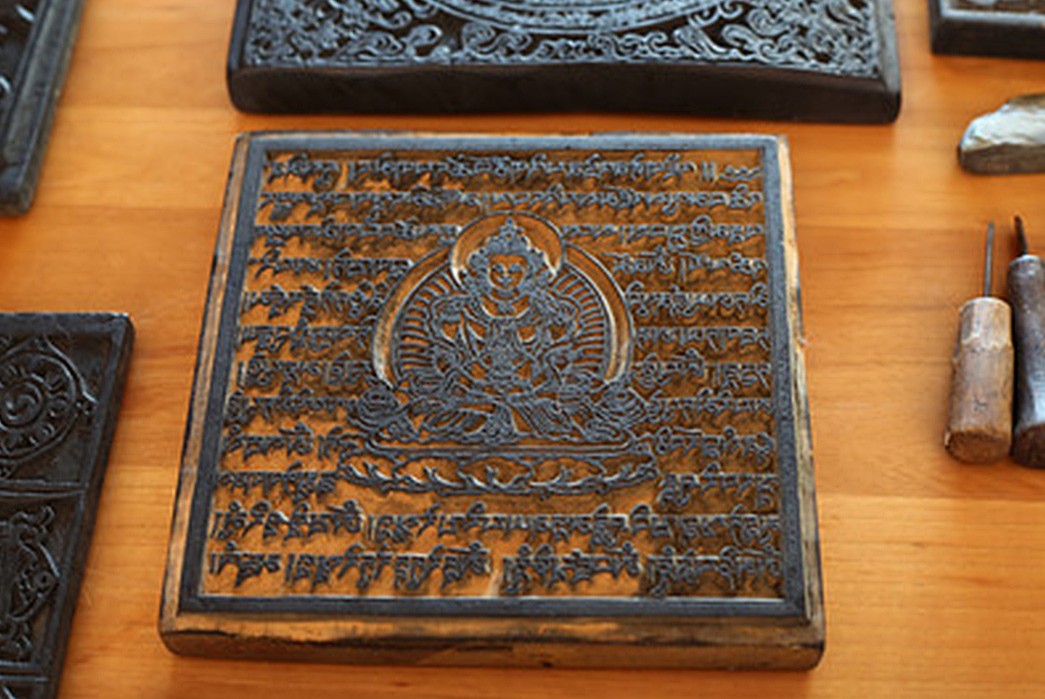
An actual woodblock. Image via Latse Library.
Woodblocks vary widely in intricacy, but in many ways they are the most logical printing technique. You cut your pattern in relief, chipping away the wood for areas you wish to remain un-dyed and make sure your design is reversed so once it isn’t backward once it lands on the fabric. All one needs for woodblock printing is wood, ink, and fabric. Printing like this made disseminating ideas much easier and created a novel, if logical way to put art on stuff.
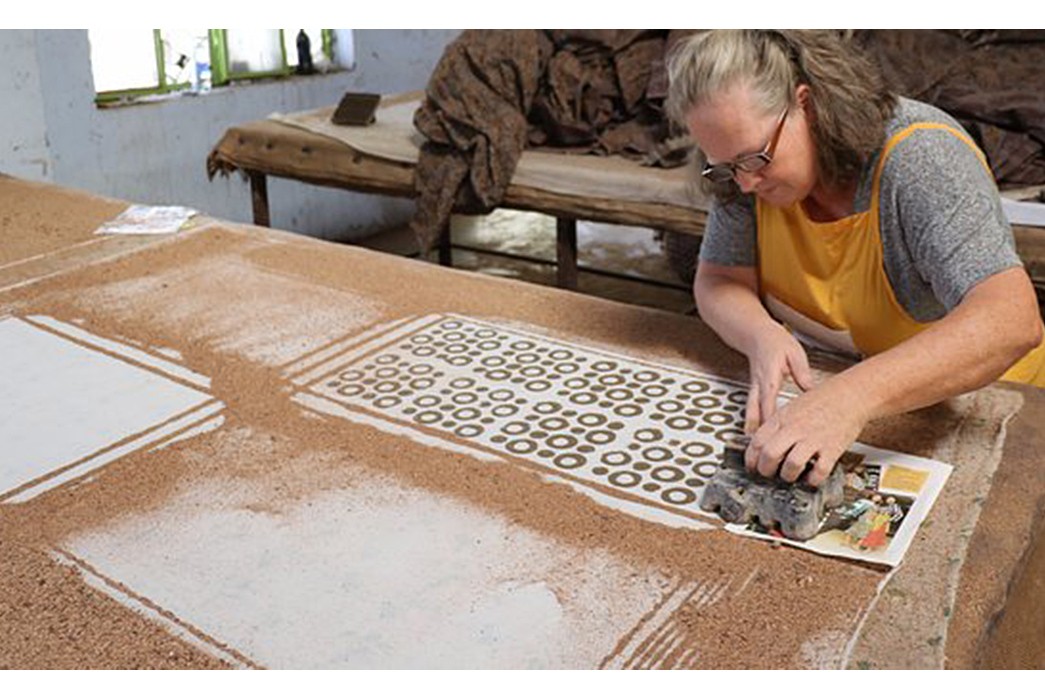
Mud resist-dyeing. Image via Trip Advisor.
The flip side of woodblock printing is resist-dyeing. The earliest example of this technique was found on linen mummy-wrappings in Egypt. These wrappings had been coated in mud, then had the mud scratched away, whereupon they were dipped in a dye of blood and ashes. The remaining mud was washed away with hot water, leaving the design.
Resist-dyeing is basically an abstraction of the woodblock system. Oftentimes the mud, wax, or paste is transferred onto the fabric with a device like a woodblock, into which the design is carved in relief. One of the most esteemed relief-dye techniques comes from Indonesia and can be seen in the very first image of this article. Incredibly intricate designs are carved and then used to transfer wax to the fabric. Once the fabric has been dipped in dye and the wax is washed away, you have one of the world’s most gorgeous patterns.
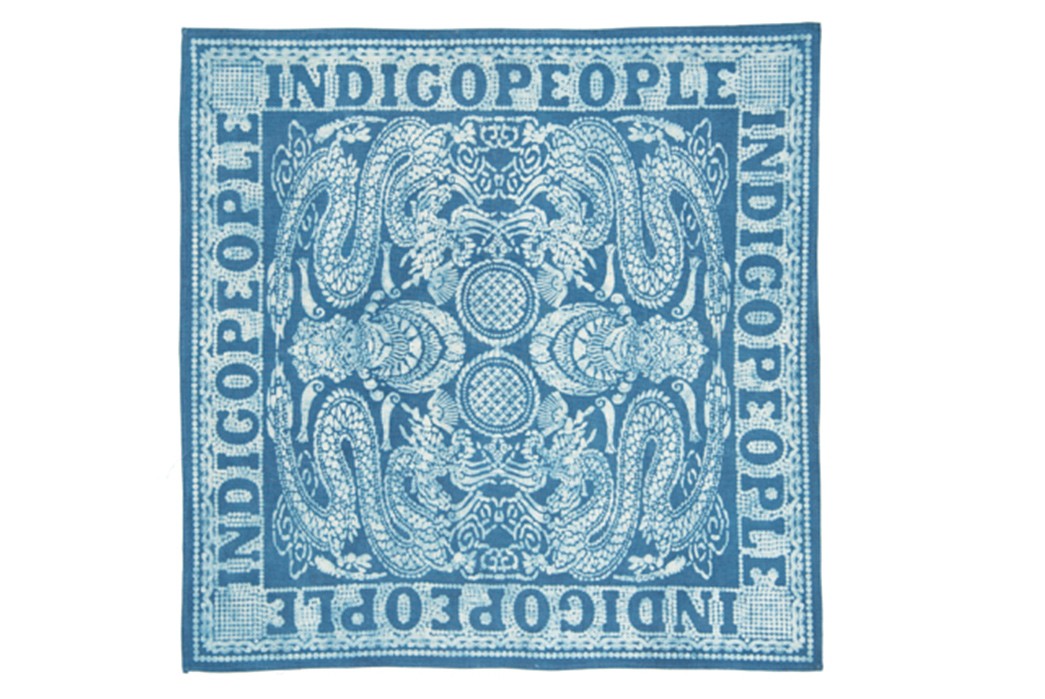
Shinwa Bandana. Image via Indigo People.
Check out this bandana from Indigo People, which uses ancient mud resist-dyeing to create beautiful natural indigo-dyed patterns.
Discharge
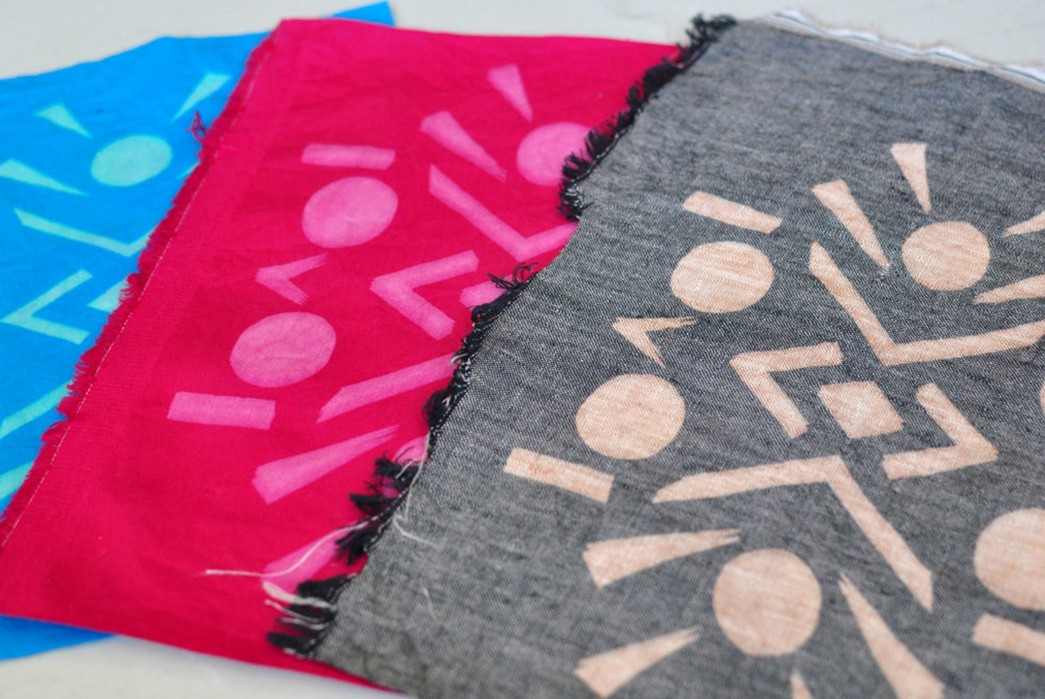
Discharge. Image via Seamworks.
Discharge printing is a little different from the previous techniques, but follows many of the same principles. With discharging, you begin with fully-dyed fabric and then apply bleach or discharge ink in patterns to remove the pre-existing colors.
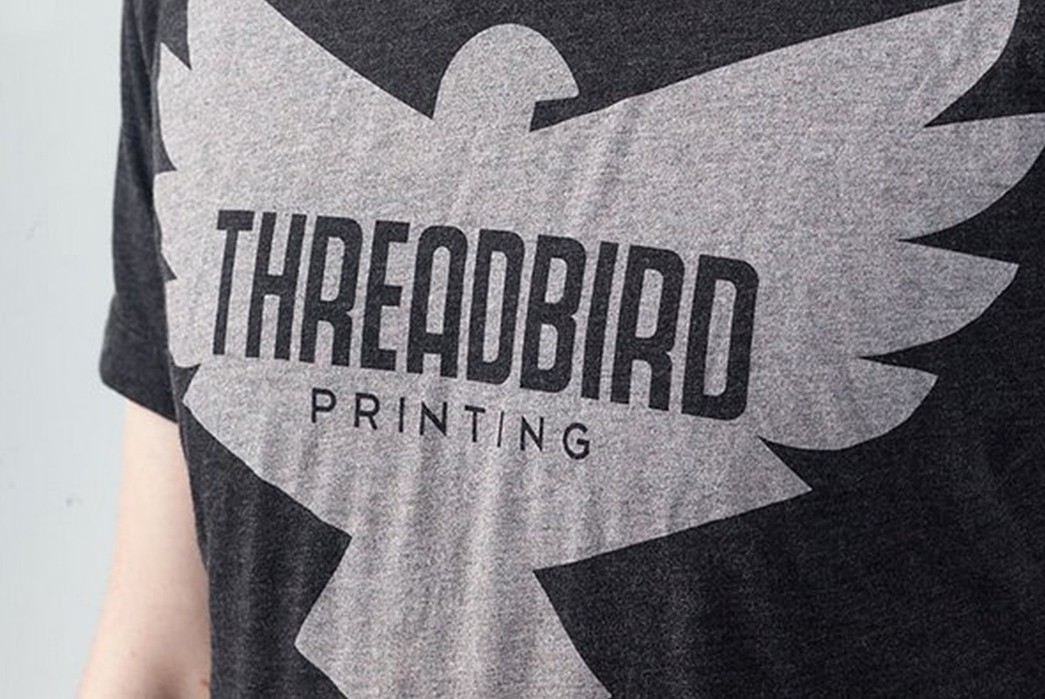
Discharge Printing. Image via Fashion2apparel.
You’ll recognize discharge printing from the legions of graphic tees you’ve got in your closet right now. Discharge printing makes the pattern a part of the garment by taking away the dye that was already there, not simply something sitting on top. And this process also keeps your tee super-soft because no actual ink is added. Certain discharge inks can actually replace the pre-existing dye with another color. In some ways, this technique is similar to resist dyeing, in that you need to make a stencil with which to focus your dyes.
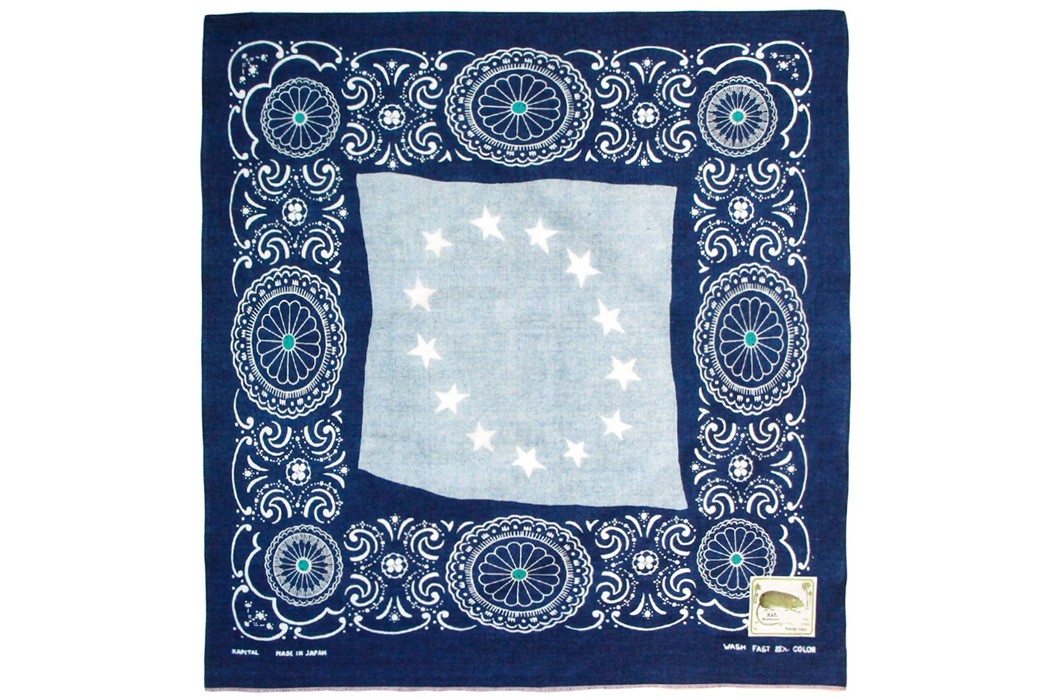
Discharge bandana from Kapital via Blue in Green.
The pattern on the above bandana from Kapital was made by removing the indigo on the surface of the fabric via a discharge print.
Screen Printing (Silkscreen)
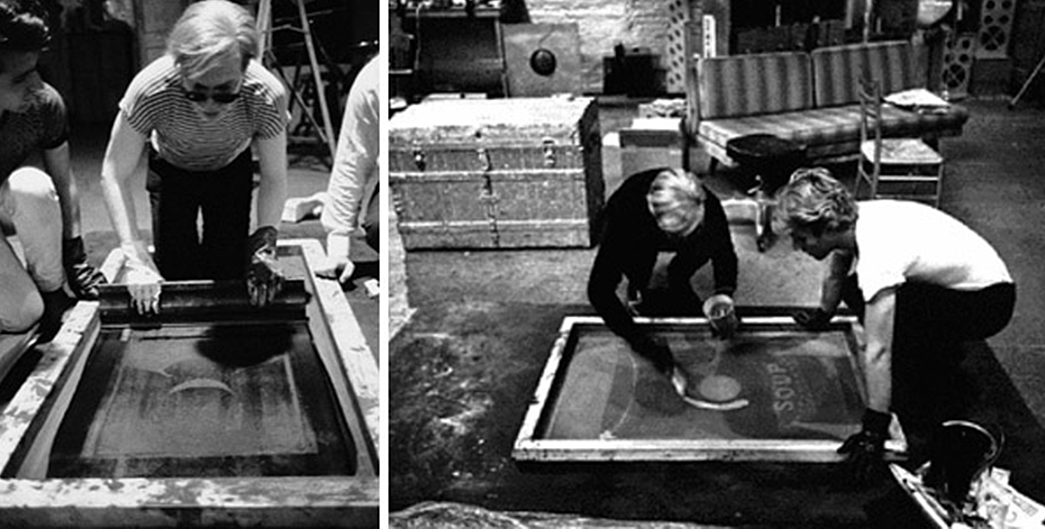
Andy Warhol screen printing. Image via Luminous Printing.
Screen printing is now the most ubiquitous of fabric printing techniques, and like the woodblock, its origins are Chinese. Screen printing was uses as far back as 960 C.E. and did not make it to Europe for quite some time, because of the silk it required.
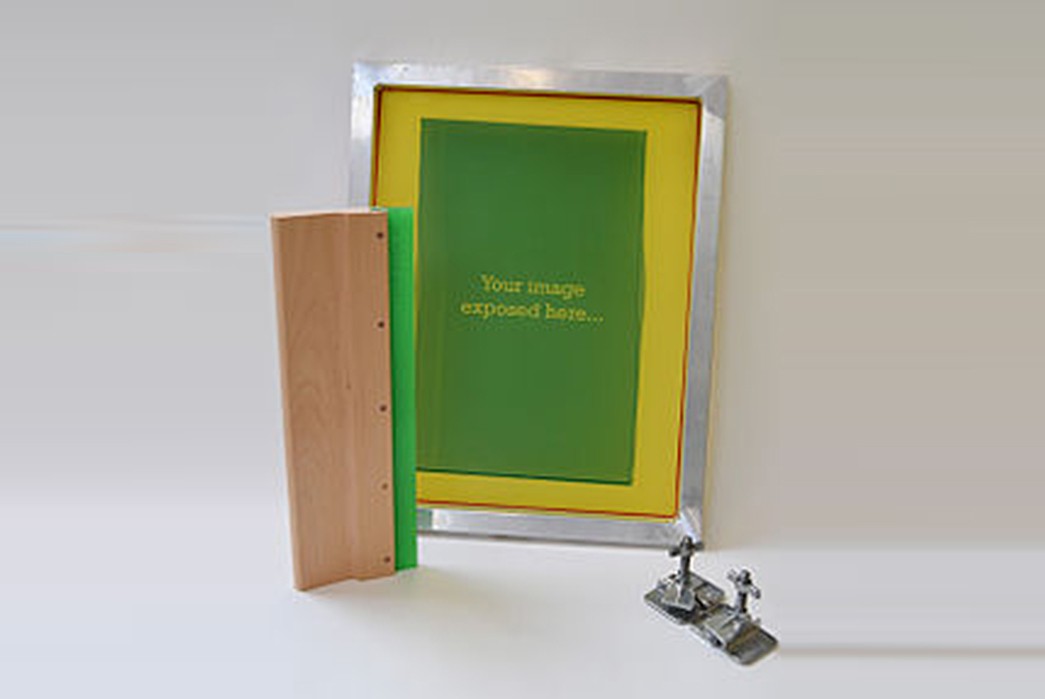
Image via Squeegee.
Nowadays, the mesh used in screen printing is usually nylon or a synthetic polymer, but it must be under a fair amount of tension to function correctly.
A stencil is made that blocks off all parts of the fabric that will not be dyed. After the screen has been adequately prepared and the artisan is sure that no dye will seep in anywhere unintended, a dye is scooped across the stencil with a squeegee, which transfers the design to whatever surface you so desire.
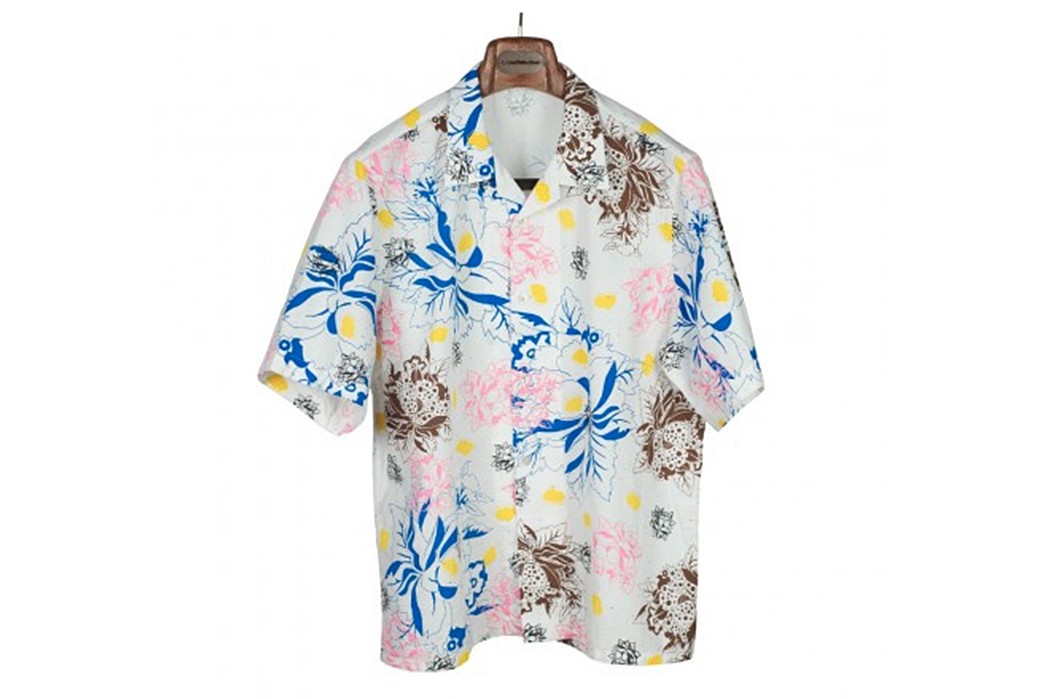
Tony Shirtmakers’ multicolored Screenprinted Hawaiian shirt. Image via No Man Walks Alone.
Screenprinting may be common, but it isn’t exactly simple. It requires patience and skill, especially when working with different colors. The above Hawaiian Shirt from Tony Shirtmakers features a screen print fabric, which has had to be printed several times in order to achieve the complexity of design and color.
Digital Inkjet Printing
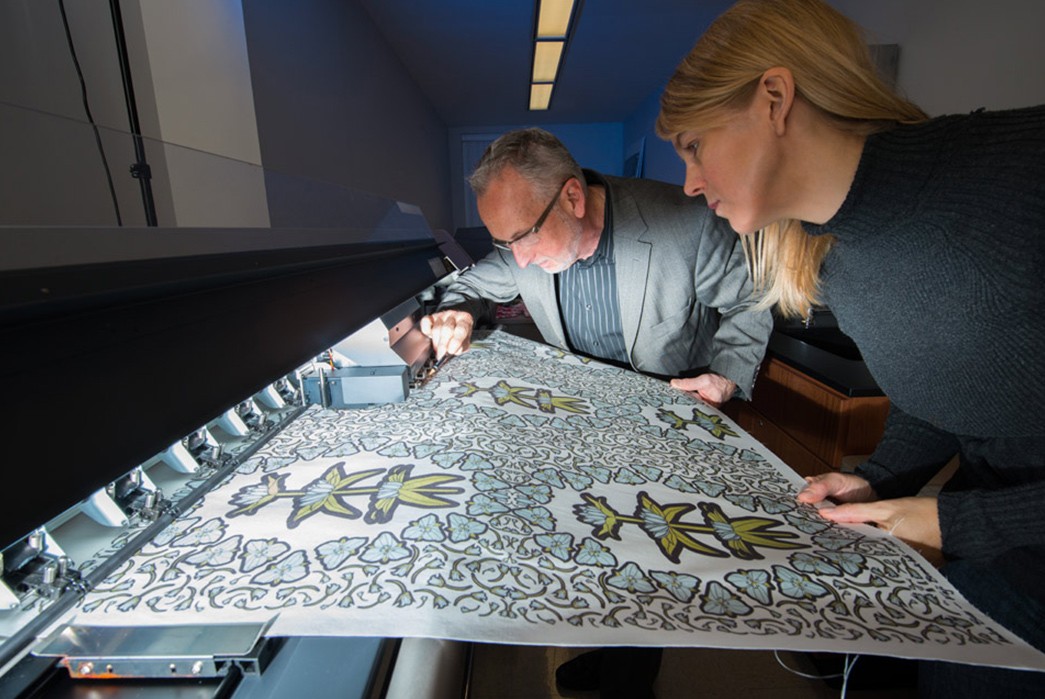
Digital Textile Printing. Image via University of Nebraska.
A relatively new technology, digital textile printing has only been possible since the late 1980s. Although dye-sublimation technology created in the early 90s allowed for designs to be printed directly onto fabric (usually nylon) without necessitating a sheet of transfer paper.
Sublimation ink, which is the industry standard, is much liked because it bonds directly with the fibers of the textile (or as it is often called: the media) and doesn’t simply rest on the surface.
The vast majority of patterned textiles on the market today are printed digitally as it is often the cheapest, fastest, and most exacting way to put ink on cloth. It’s a fast-growing industry, but certainly lacks some of the attention to detail and humanity that makes the other techniques so special.
Lead image of woodblock printing in India via Gaatha.

